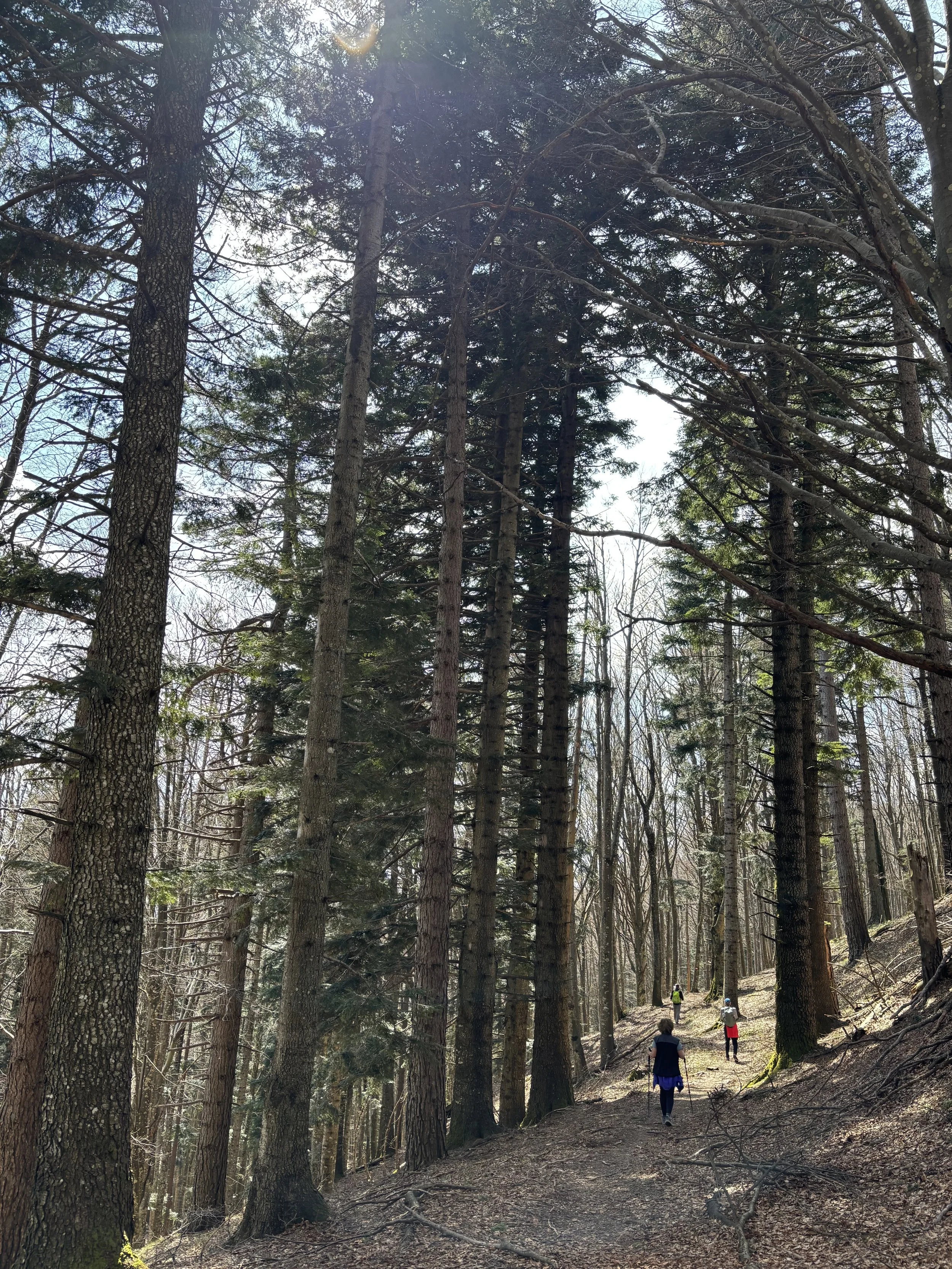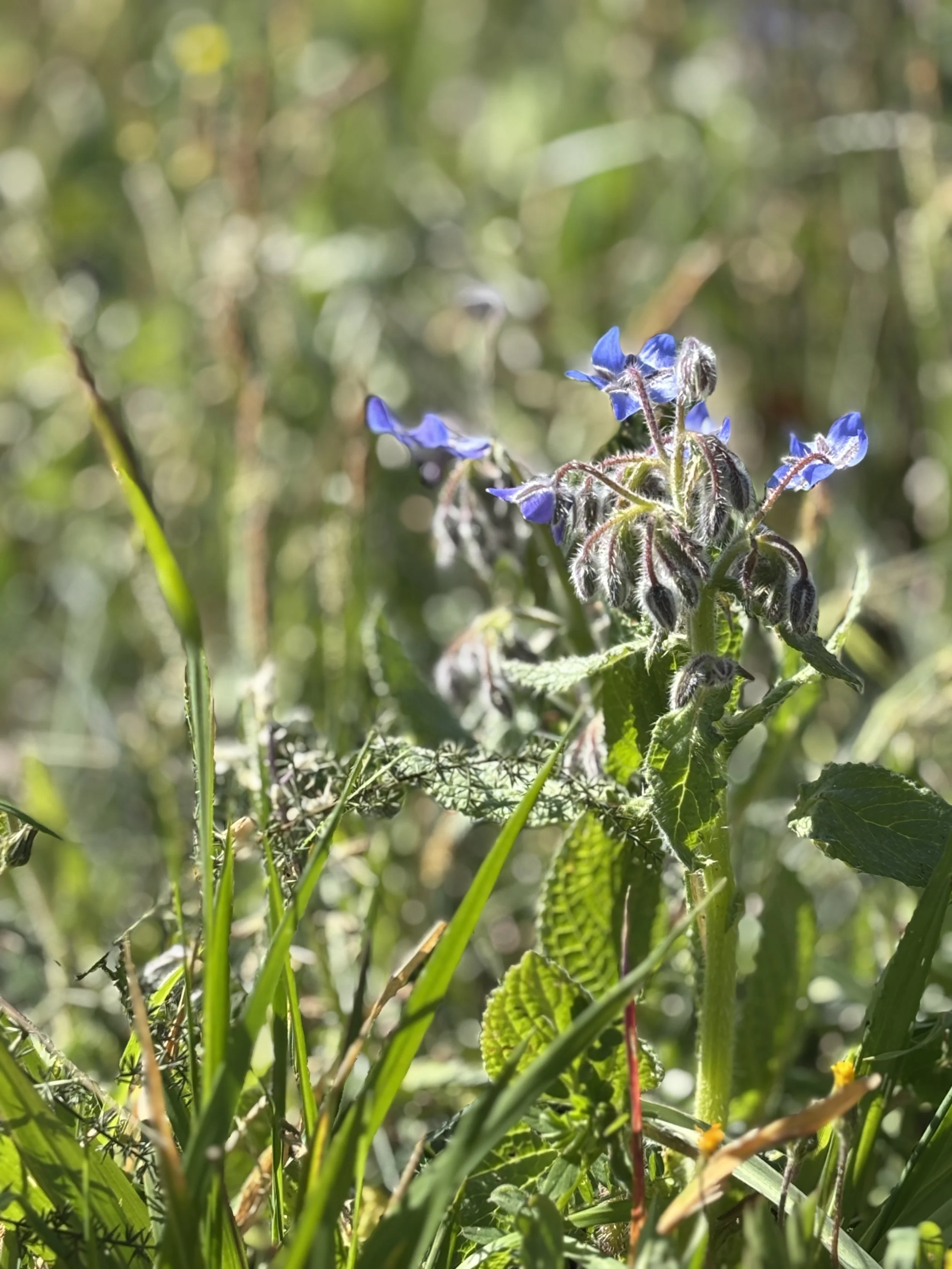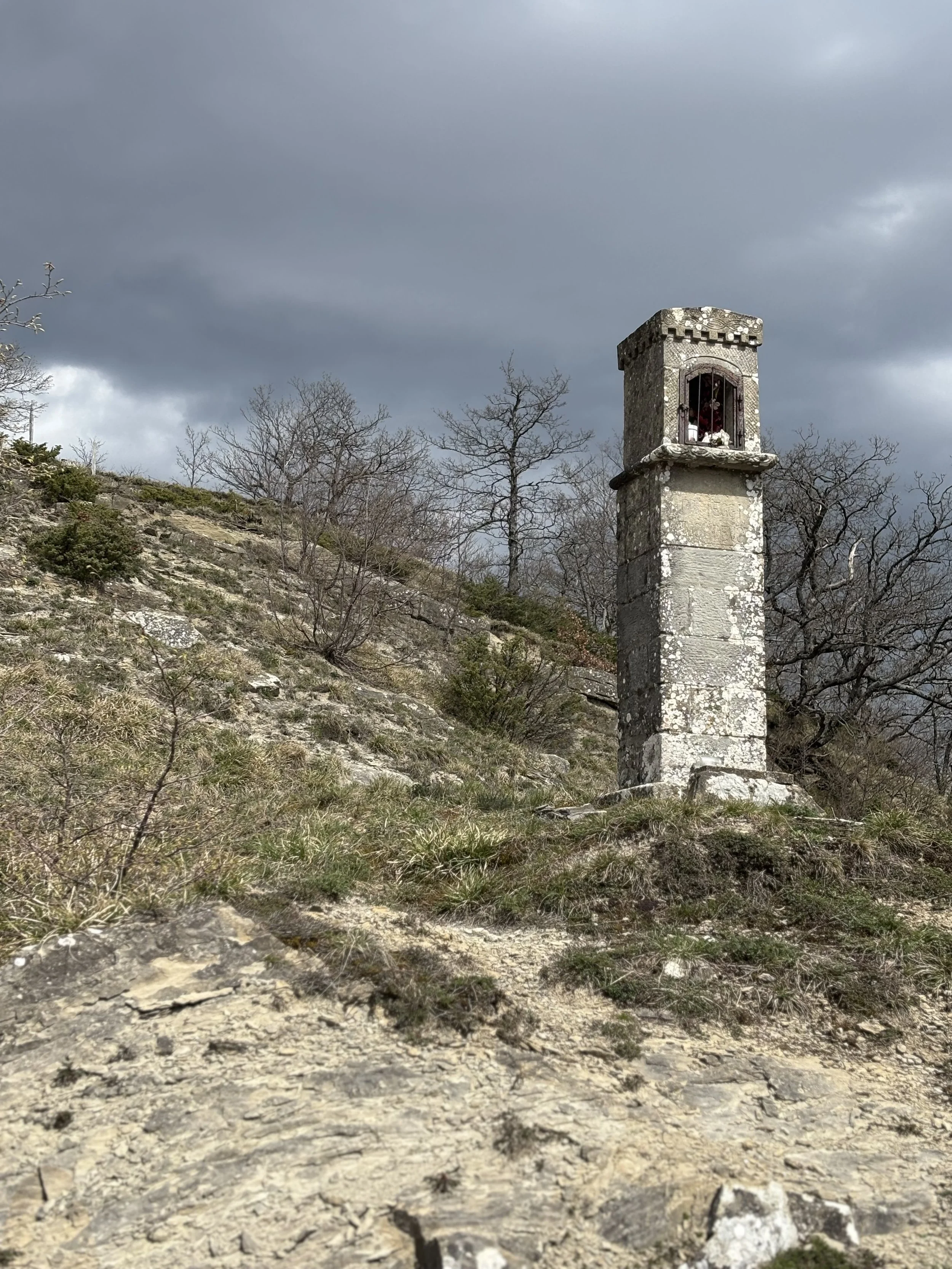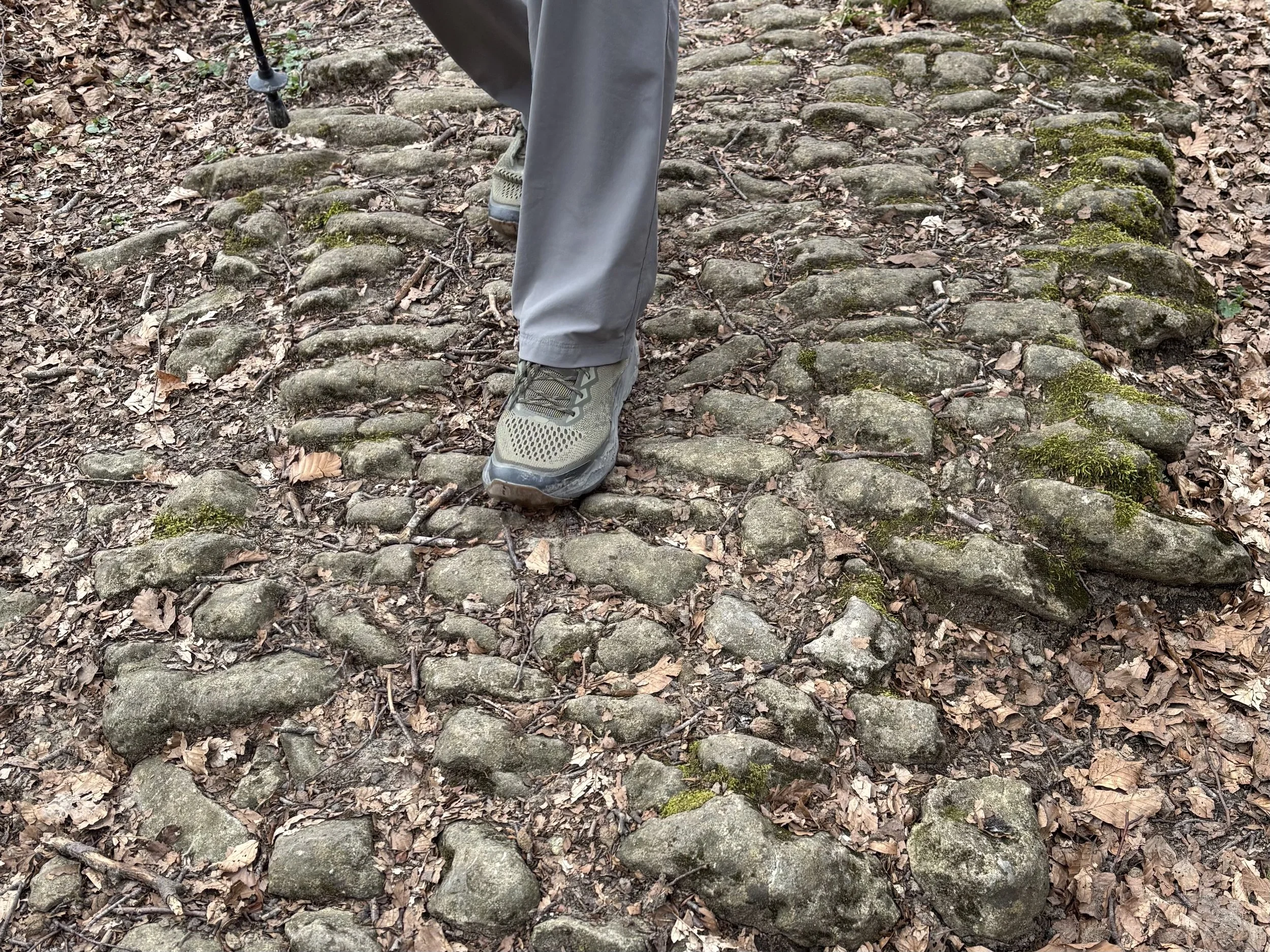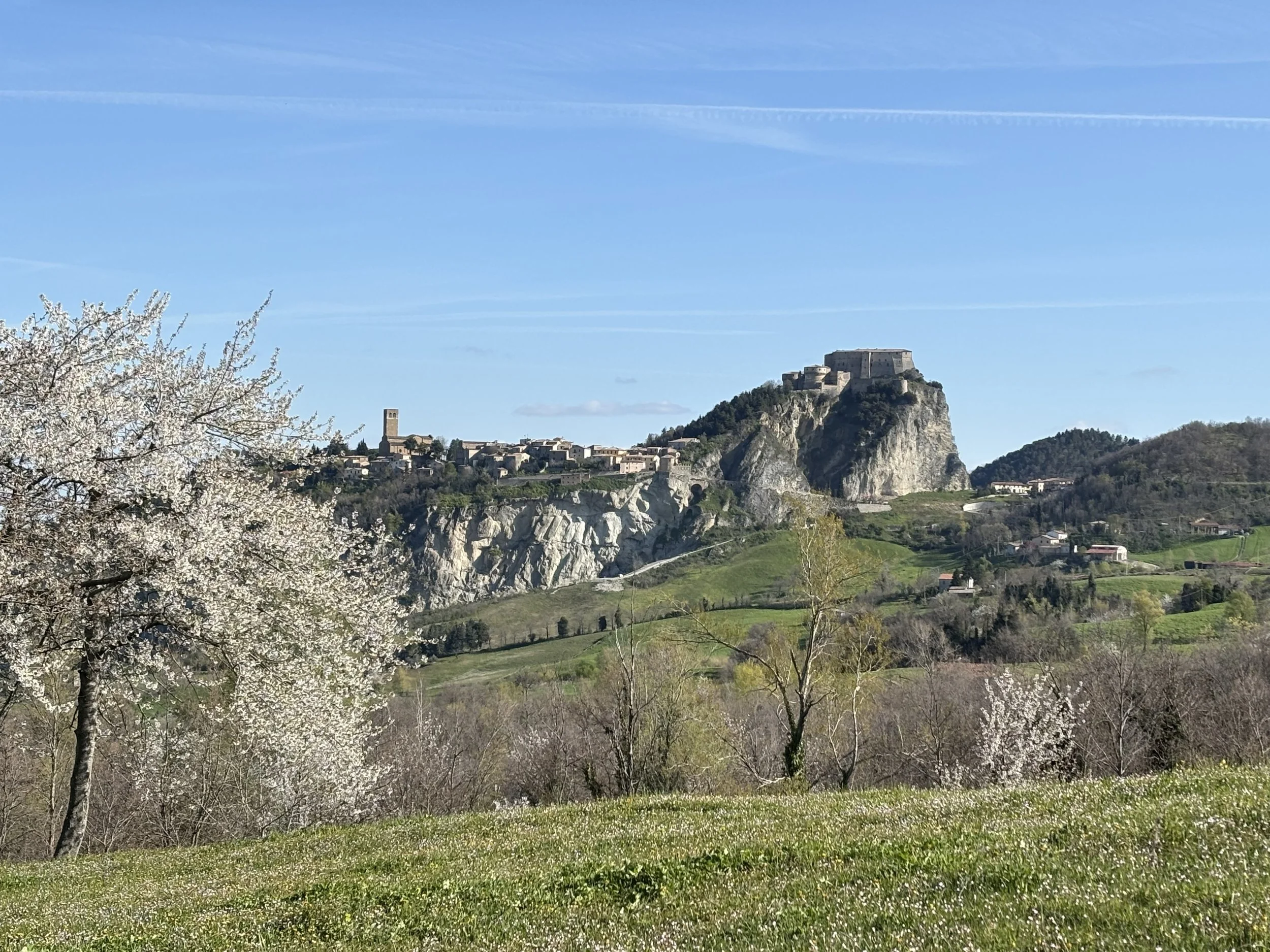By Kerri Westenberg
“In an age of speed, I began to think, nothing could be more invigorating than going slow.”
—Pico Iyer
Wise words from the famous essayist Pico Iyer.
I recently took the “In the Steps of St. Francis” tour with Esperienza, and I feel, to borrow Iyer’s word, extremely invigorated.
Our small group hiked from one spectacular hilltop town to the next, tracing ancient trails through the Apennines. It was a journey through Emilia-Romagna on foot—the way countless humans traveled before us. With each step, I felt more connected to the land, its people, and curiously, to myself. Moving slowly—with trekking poles in hand instead of phones—I noticed more, reflected more, felt more.
Early on, as we strolled along the Marecchia River, our guide Alessia paused at a purple flower swaying in the breeze. “It’s borage,” she said, popping it in her mouth. Italians still cook with the wild plant that they often forage.
Along the trail, we passed faded shrines perched against mountain backdrops, fields dotted with white-blossomed trees that looked like popcorn and rivers that burbled as water spilled over rocks. Birds dove for insects. We greeted a gnarled, impressive tree with “Buongiorno, signor albero,” (Good day, Mr. Tree!) as Italians sometimes do, to honor its age and quiet witness to centuries.
Walking opens up such moments. It also opens doors.
Along the trail, we met organic farmers whose friendly dogs bounded down the lane to greet us, seeming to invite us to the barn where newborn lambs bleated. In one town, I sipped a morning espresso while the proprietor—enjoying his own morning drink, wine—proudly told me that the waters from his mountain village flow all the way to Rome. In another town, we paused for artisan gelato—the gelato-maker himself doling out scoops, each one a small masterpiece.
We passed through a village preparing itself for summer. One husband-and-wife team were cleaning their garden plot. A few houses down, a woman sat in the shade of her garage carving ears from potatoes, readying them for the earth. We made way for a farmer who drove his tractor down the road, his two eager dogs in pursuit.
Such encounters deepened my sense that I was seeing Italy in a new light, from mountain vistas to the quiet life of villages.
The hiking portion of our trip ended at the Sanctuary of La Verna, a Franciscan monastery tucked into the forested cliffs of Tuscany’s edge, where Saint Francis is said to have received the stigmata. (We carried on to a mountain retreat with mineral hot springs and a Michelin-star restaurant.) After a quiet night in our guest rooms, we gathered in the cathedral for morning prayers. After the beautiful singing of the psalms, a priest stepped forward and invited the many pilgrims who follow the way of St. Francis to receive a blessing.
We gathered around him, and he told us, “Walk with your heart as well as your body.”
After several days of moving through the heart of Italy—across forests and fields, up steep paths and into towns built of stones and brick—both body and heart had been deeply touched. At human speed, you travel with intention. You feel the effort of the climb and the joy of the well-earned view—and meal.
I’ve been to Italy many times before. But I have never felt such an close connection to the country. Hiking, I found, focuses the mind and opens the senses. This trip stretched my legs—and my perspective.

